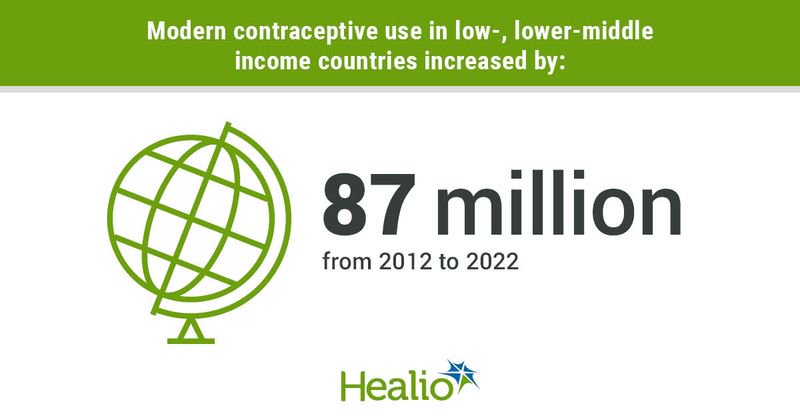Demand for contraception increased in low-, lower-middle income countries since 2012
The number of reproductive-aged women and girls using modern contraception in low- and lower-middle income countries increased by 87 million since 2012, according to the most recent data from the UN Foundation’s Family Planning 2030.
“The past 10 years, for us and the whole [family planning] movement, has been full of obstacles for country health systems — from the global pandemic, from natural disasters and even political upheaval that we have seen with armed conflict, rendering some of our countries to be called ‘fragile states’ where volatility is the order of the day,” Samukeliso Dube, MD, MPH, DTMH, MBA, executive director of Family Planning 2030 (FP2030), said in a press briefing. “Yet, through it all, we are seeing that women everywhere have continued to seek out and use modern contraception in ever-growing numbers.”

In 2021, FP2030 began using a measurement framework similar to that for FP2020, which began with the 69 poorest countries in 2010. The current iteration enables 82 low- and lower-middle income countries to monitor, analyze and report their family planning data for reproductive-aged girls and women (aged 15-49 years). The 2022 report included data through July.
Modern contraception use rose from 31% in 2012 to 35% in 2022, increasing from 284 million to 371 million. In the past year, the use of modern contraception eliminated an estimated 141 million unintended pregnancies, 29 million unsafe abortions and 150,000 maternal deaths, according to the report.
Notably, there were 14 countries that more than doubled their contraceptive use since 2012.
Sub-Saharan African countries reported the sharpest increase in contraceptive use, growing by 6.2% from 16.8% in 2012 to 23% in 2022. European and Central Asian countries had the highest usage rates in both 2012 (38.4%) and 2022 (41.6%). From 2012 to 2022, contraceptive usage rates increased from 38% to 39.2% in East Asian and Pacific countries; from 36.3% to 40.9% in Latin American and Caribbean countries; from 34.9% to 38.2% in Middle Eastern and North African countries; and from 36% to 39.8% in South Asian countries.
The FP2030 report also collected data on whether contraception was obtained through the public or private sector for the first time. For example, Rwanda reported that 99% of implant users and 50% of injection users received these through the public sector. However, some countries, such as Indonesia, reported the private sector as an important source of myriad contraceptive methods.
“Failing to adequately fund family planning efforts would be a missed opportunity for millions of women,” Dube said in a FP2030 press release. “We need not only to hold the line, but also to secure new funding to accommodate the surge in demand for family planning. The hard-won gains of the last 10 years could slip away if we don’t act now.”
References:
- Ankilu M. Family Planning 2030 report shows steady rise in demand for contraception. https://africaneyereport.com/family-planning-2030-report-shows-steady-rise-in-demand-for-contraception/. Published Jan. 25, 2023. Accessed Jan. 27, 2023.
- Measurement overview. https://progress.fp2030.org/measurement/. Accessed Jan. 27, 2023.

